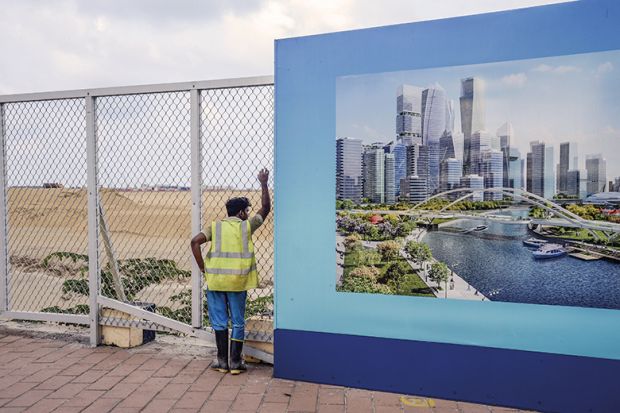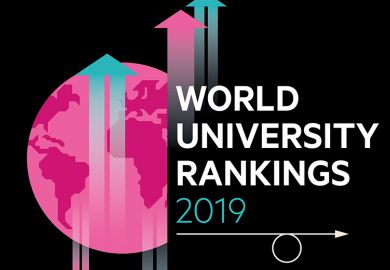Browse the full results of the World University Rankings 2019
The 21st century has been projected as the Asian Century, particularly given China’s rapid rise to economic, cultural and political prominence. Of the various regional action plans in Asia, the biggest is undoubtedly China’s Belt and Road Initiative (BRI), announced in 2013 by President Xi Jinping to improve cooperation among countries in a vast part of Asia, Europe and Africa.
The initiative, which takes advantage of international transport routes, strategic cities and key ports, is ambitious in its expansive geographical scope. Already, it involves more than 70 countries, representing more than 60 per cent of the world’s population, 30 per cent of global gross domestic product and 35 per cent of world trade. China has made it clear that the Belt and Road project is open to all nations and international and regional organisations for engagement, not limited by geography, to ensure that the monumental effort yields wide-ranging benefits.
The Belt and Road Initiative is a large-scale strategy for achieving sustainable development through strengthening connectivity with partner countries and establishing mutually beneficial economic relations. It aims to strengthen China’s hard and soft infrastructure through cooperation in five areas – policy, infrastructure, trade and investment, financial integration and people-to-people exchanges – to achieve sustainable growth and development. Thus, it presents tremendous opportunities for sustainable economic and social advancement in the region.
THE World University Rankings 2019: results announced
However, the delivery of the initiative is also associated with financial, social and environmental risks, making policy research in universities an imperative. The Economic Times reported last year that the United Nations had warned about potential risks in some south and central Asian countries. The financing of infrastructure projects related to Belt and Road may put some smaller economies with underdeveloped financial markets at risk where huge external debts will accrue and the balance of payment stability will be undermined.
On the social front, displacement and marginalisation of local communities and indigenous groups may result from property acquisitions and changing communities. Poor work conditions, especially for migrant workers and construction workers in remote areas, are also a concern. More broadly, social unrest and ethnic conflicts could escalate in societies and areas if fair, people-centred approaches are not applied to Belt and Road schemes.
On the environmental front, large-scale infrastructure projects under the initiative have the potential to damage natural resources and endanger the habitats of threatened species. Ignoring the potential environmental impacts could seriously undermine countries’ efforts to tackle climate change and ensure sustainable development. “Greening” the Belt and Road Initiative is, therefore, an international priority.
The Chinese government has emphasised that it is committed to addressing sustainability within the project’s infrastructure plan by embracing principles such as low-carbon economy, ecological conservation, technological exchanges, green production and green consumerism. However, comprehensive, cross-region monitoring will be needed to ensure the proper implementation of these principles.

The Belt and Road Initiative is a mammoth undertaking that will have global repercussions. How other parts of the world will perceive and receive it, and how this will influence their policies, will constitute an integral part of the development process. Critical analysis of the local and global impacts of Belt and Road projects on the financial, social and environmental fronts must be carried out to inform decision-making by governments, private and public financial institutions, financial regulators, companies and society.
A key responsibility of research universities in the Belt and Road regions is to explore ways to mitigate the possible risks and to inform policymakers so that the initiative’s opportunities can be maximised for everyone. It is imperative that universities build stronger cooperation between academic institutions, governments, international agencies and other key stakeholders, to ensure the relevance and impact of our work.
Hong Kong, as a strategically located metropolis distinguished by its unique blending of the cultures of East and West with internationally compatible trade, commercial and legal systems, is well positioned to be a “super-connector” for the Belt and Road Initiative and to contribute to policy research.
Early this year, Jeffrey Sachs, director of the UN Sustainable Development Solutions Network, delivered a keynote speech at the Chinese University of Hong Kong to help launch the SDSN Hong Kong Chapter, co-hosted by the Hong Kong Jockey Club Charities Trust and CUHK. That universities are actively supporting the SDSN chapters worldwide clearly indicates the unique role that universities are entrusted with.
Download a copy of the THE World University Rankings 2019 digital supplement
At the launch ceremony of SDSN Hong Kong, I made the comment that universities are the centres of knowledge generation and serve as knowledge repositories. Not only do we create and incubate new technologies, through research and development, but most importantly we are tasked with educating and inspiring future generations of leaders in sustainable development. I also share the vision of Sachs on how Hong Kong can help to advance the UN’s Sustainable Development Goals in the context of the Belt and Road Initiative, by addressing the scheme’s sustainable development challenges as well as contributing its own knowledge and experience to global problem-solving.
In May, the Chinese government announced exciting new measures on direct grant funding of science and technology research for higher education and research institutions in Hong Kong. The move will enable Hong Kong’s universities and researchers to play a more active role in key national projects and policymaking, and to support the city’s ambition to become a global innovation and technology hub. This is indeed the perfect time for universities to work together to address potential challenges that may arise from the development of the Belt and Road Initiative.
Rocky Tuan is vice-chancellor and president of the Chinese University of Hong Kong.
Register to continue
Why register?
- Registration is free and only takes a moment
- Once registered, you can read 3 articles a month
- Sign up for our newsletter
Subscribe
Or subscribe for unlimited access to:
- Unlimited access to news, views, insights & reviews
- Digital editions
- Digital access to THE’s university and college rankings analysis
Already registered or a current subscriber?










